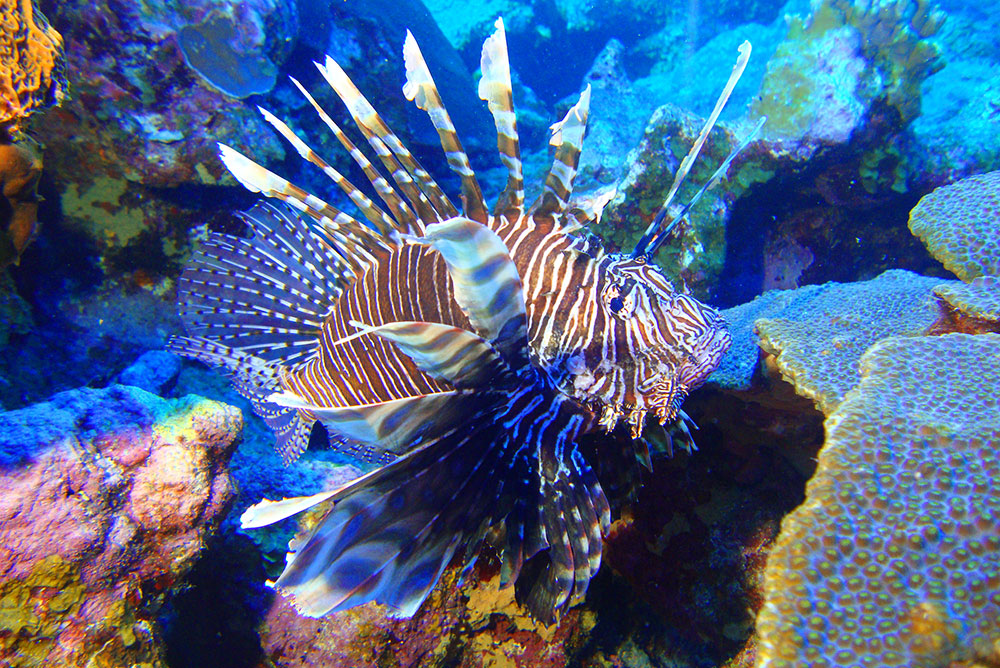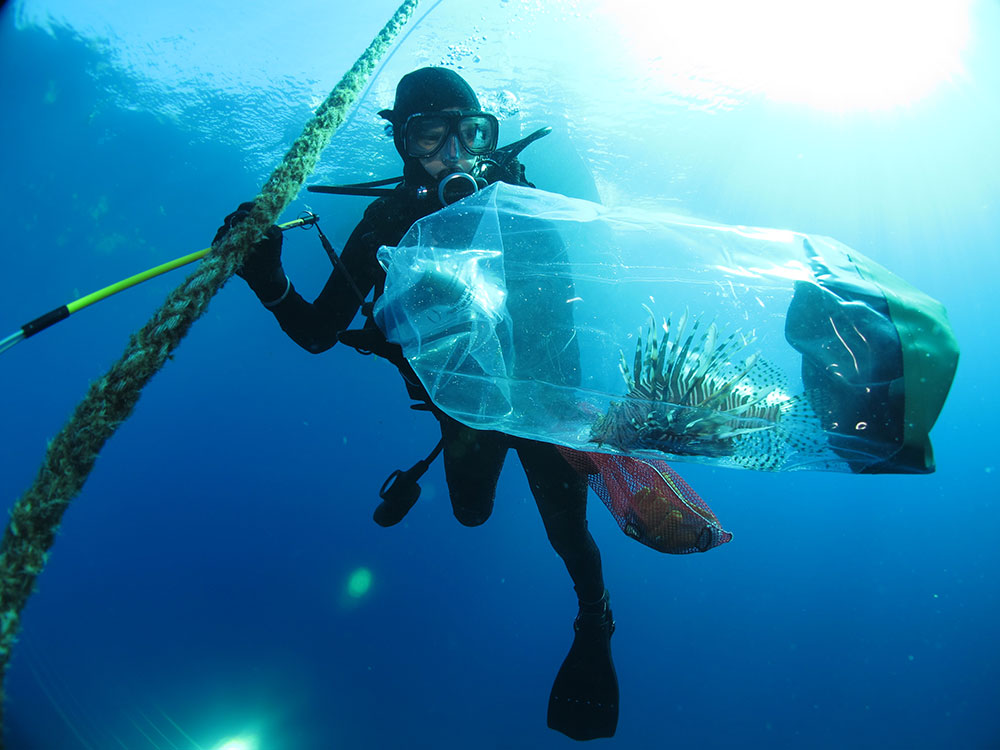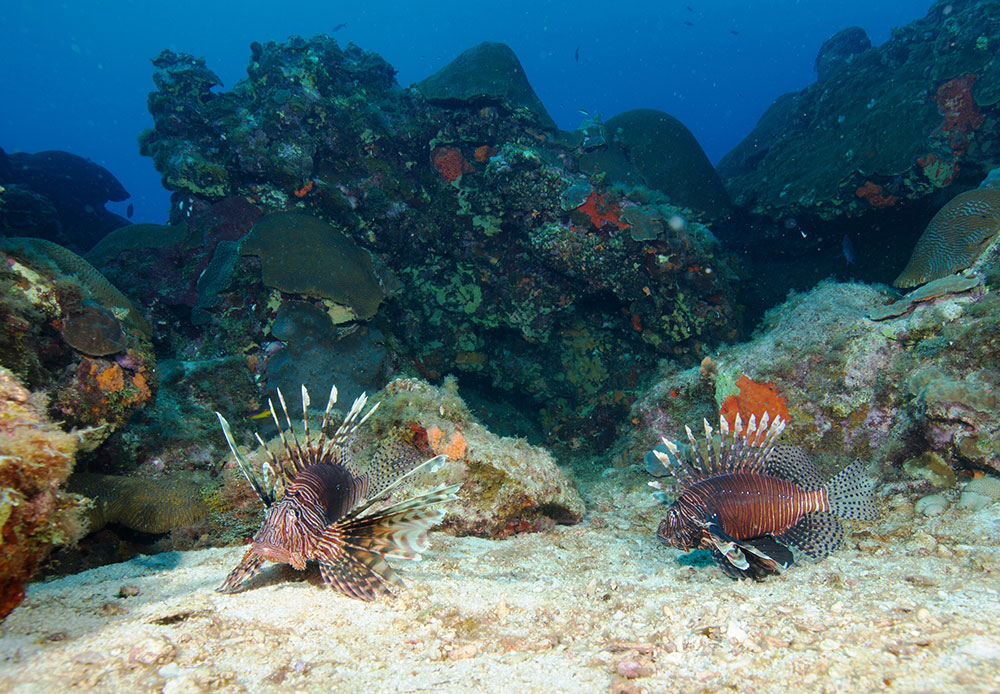On the Hunt for Answers:
Dr. Michelle Johnston on driving back the lionfish invasion
by Caroline Peterson

A highly invasive species, lionfish prey on native species, quickly destroying biodiversity and threatening ecosystems. Since they have a high breeding rate and are not subject to any predators themselves, they thrive and multiply. Florida Keys and Flower Garden Banks national marine sanctuaries have become home to the lionfish, and there have been sightings at Gray's Reef and Monitor as well. Dr. Michelle Johnston, ONMS project coordinator at Flower Garden Banks National Marine Sanctuary, has spent years concerned with what the future holds for both lionfish and sanctuaries.
Michelle has made it her mission to get to know these lionfish on a personal level—but not necessarily in a friendly way. She studies different aspects of lionfish lives, including their origin, diet, and whereabouts, and is co-author of the ONMS Lionfish Response Plan, released in February, which calls for removal, research, monitoring and education efforts to minimize the effects of this unprecedented invasion. As a firsthand witness to their growing prominence, an active researcher, and one of the people on the front lines of removal efforts, she's heavily invested in the battle.

On her very first dive, "I didn't see one" lionfish, Michelle says. "And now every time we go out and dive I see at least 10 or more." She jokes that she "can't ever get away from them."
Michelle, along with other ONMS scientists at Flower Garden Banks, is currently planning a removal cruise where lionfish will be studied and collected over the course of four days. The researchers will survey lionfish population densities and dissect their guts in order to study their diet. The project not only involves NOAA scientists, but also interested and trained divers; Michelle notes that public support is an important component of the sanctuary's battle.
Concerned citizens can participate in a multitude of ways, including dives, lionfish handling classes, and derbies, in which people compete to catch the biggest, smallest and most lionfish. Furthermore, Michelle stated that simply going to a restaurant and ordering lionfish, or encouraging a restaurant to serve it, is a way to show your support for the ongoing health of marine ecosystems.

"The silver lining is that lionfish have engaged people," Michelle notes; the invasion "makes people care about the ocean." While lionfish continue to be a major threat to the life and beauty of the sanctuaries, these invasive fish haven't won the battle yet.
As for the future, Michelle knows that eradication is impractical, with lionfish releasing nearly 20,000 eggs every four days. Still, the ONMS Response Plan emphasizes the importance of local control, with removal activities based on the population levels in priority areas of the sanctuaries.
Michelle and others in ONMS, as well as their partners, also still hold hope that nature will come to its own rescue, with native species developing a taste for lionfish and becoming predators. Michelle puts it this way: "We have seen things where an eel or a grouper has eaten a lionfish. The million dollar question is: Will they eat it twice?"

